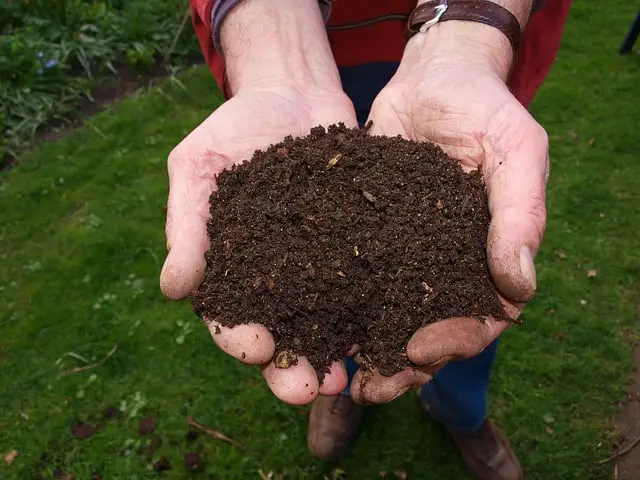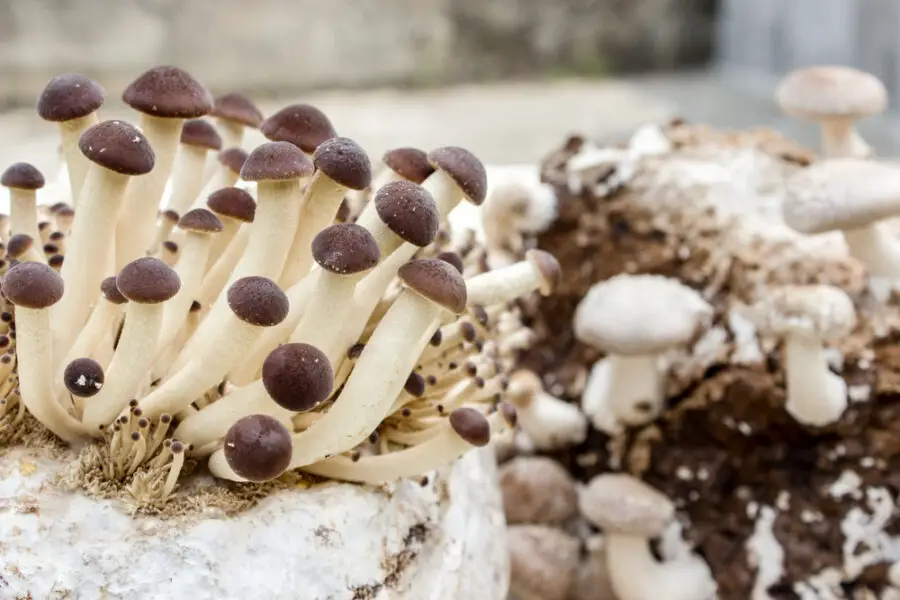Growing mushrooms in your bedroom is a safe practice as long as you adhere to some essential guidelines. Most importantly, know your species as you don’t want poisonous spores released into your living space. Also, due to their requirements of dark and humid environments, you may find that mushroom growing is better suited to your basement.
Can You Get Sick From Growing Mushrooms?
It is safe to grow a variety of mushrooms at home, as demonstrated in the numerous range of mushroom growing kits available to purchase.
But while types such as oyster mushrooms may provide an intriguing and tasty addition to your home, it’s essential to stick with known species that are safe for humans.
Is Mushroom Mold Dangerous?
Even professional mushroom growers can find themselves presented with moldy mushrooms. The simplest mistakes can lead to contamination from air currents, the surrounding environment, or the tools used.
Often the result of inadequate growing conditions, mushroom mold appears in three predominant forms.
All molds have the potential to be detrimental to a person’s health. When growing mushrooms, it’s vital to identify and eliminate mold to protect the physical wellbeing of yourself and your mushrooms.
Which Types of Mushroom Mold Are Common?
Blue-green mold is the gene famous as the source of penicillin. This type of mold should be considered a serious threat as it can lead to the creation of mycotoxins: naturally occurring but poisonous chemicals.
Black mold, also known as aspergillus, is found in various forms, including poisonous ones. Prolonged exposure can lead to respiratory problems, particularly if you have a weakened immune system or allergies.
Green mold is a parasitic and aggressive form of fungi that thrives in humid environments with little airflow. Black mold may be considered one of the most dangerous molds, but its green counterpart has the potential to pose just as significant a health threat.
Can Breathing Mushroom Spores Make You Sick?
While breathing moderate amounts of mushroom spores in the air is normal and mostly harmless, prolonged exposure can be significantly more dangerous.
Lengthy exposure to spores can cause you to develop acute lung disease, and untreated inflammation can develop into more severe lung disease.
A common type of lung inflammation associated with breathing in mushroom spores is hypersensitivity pneumonitis, whose symptoms include chills, shortness of breath, and coughing.
Inhaling large quantities of mushroom spores can also be a precursor to asthma attacks.
Can Mushrooms Grow In Your Stomach?
Gut health has risen to prominence over the last few years, and conversation is rife about the bacteria housed in your gut microbiome.
And it’s not only bacteria that inhabit your gut; fungi, viruses, and parasites join them; the same group of organisms that contain mushrooms. Their presence can have a massive impact on your health.
Breathing in large quantities of mushroom spores can heighten the chances of them growing inside your body.
Are Spores Poisonous?
Whether or not a spore is poisonous depends entirely on its variety. To determine the toxicity of a spore, you would need to know which mushroom variety it originated from.
As most fungal spores are less than five microns in diameter, they can easily find their way into your lungs. Therefore, you must avoid inhaling the spores of poisonous species.
What Do You Do If You Inhale Fungal Spores?
In general, the inhalation of fungal spores is unlikely to create any health problems, and you aren’t required to take action.
If, however, you develop symptoms such as headaches, flu symptoms, or rashes following exposure to fungal spores, it is worth investing in treatment.
For minor symptoms, keep the source away from you, use a nasal spray to reduce inflammation, and take antihistamines to reduce your allergy symptoms.
For symptoms that persist or pose severe threats such as breathing difficulties, refer to a healthcare specialist.
Which Is The Best Room In The House To Grow Mushrooms?
Mushrooms will thrive in an environment that is humid and dark, such as a basement. While you can grow mushrooms in your bedroom, or indeed any room of your house, a cellar may provide greater suitability both for your own health and for the health of your mushrooms.
Though space requirements can vary, 100lb of mushrooms per week will generally require about 200 by 250 feet of space.
What To Watch Out For When Growing Mushrooms
When growing mushrooms, the lead cause of failure is contamination. Not only will this prevent your mushrooms from thriving, but it could also pose a health threat by further contaminating the surrounding area.
While fresh air may be suitable for your mushrooms, it is crucial for you, if you are housing spores in an enclosed environment. Ensure proper ventilation in the room where you set up your mushrooms.
Can Growing Mushrooms Be Dangerous?
Optimum conditions for mushroom growth are 65-75°F, with a relative humidity level of 80-90%.
The latter presents a problem as recommended humidity levels for humans are 30-60%. As part of your body’s defense against high temperatures, you sweat; but if you are in a humid environment, that sweat cannot evaporate, and you are left to get hotter and stickier.
Additionally, increased humidity often creates increased allergens and exacerbates pre-existing respiratory conditions.
In a process called “off-gassing,” high levels of humidity cause any toxins in the surrounding environment to rise in concentration as their chemicals react with the water vapor.
Mushroom growing poses hazards due to the release of spores and the conditions they require that are not designed as healthy human living conditions.
How Can You Tell If Mushrooms Are Poisonous?
There is no guaranteed rule to identify which mushroom species are poisonous; however, if you are a beginner, there are a few helpful signs you can look out for.
It’s best to avoid any mushrooms with white girls, a ring on the stem, or the appearance of a skirt. Additionally, steer clear of any mushrooms that have red coloration on the cap or stem.
If in doubt, it’s best to avoid.


